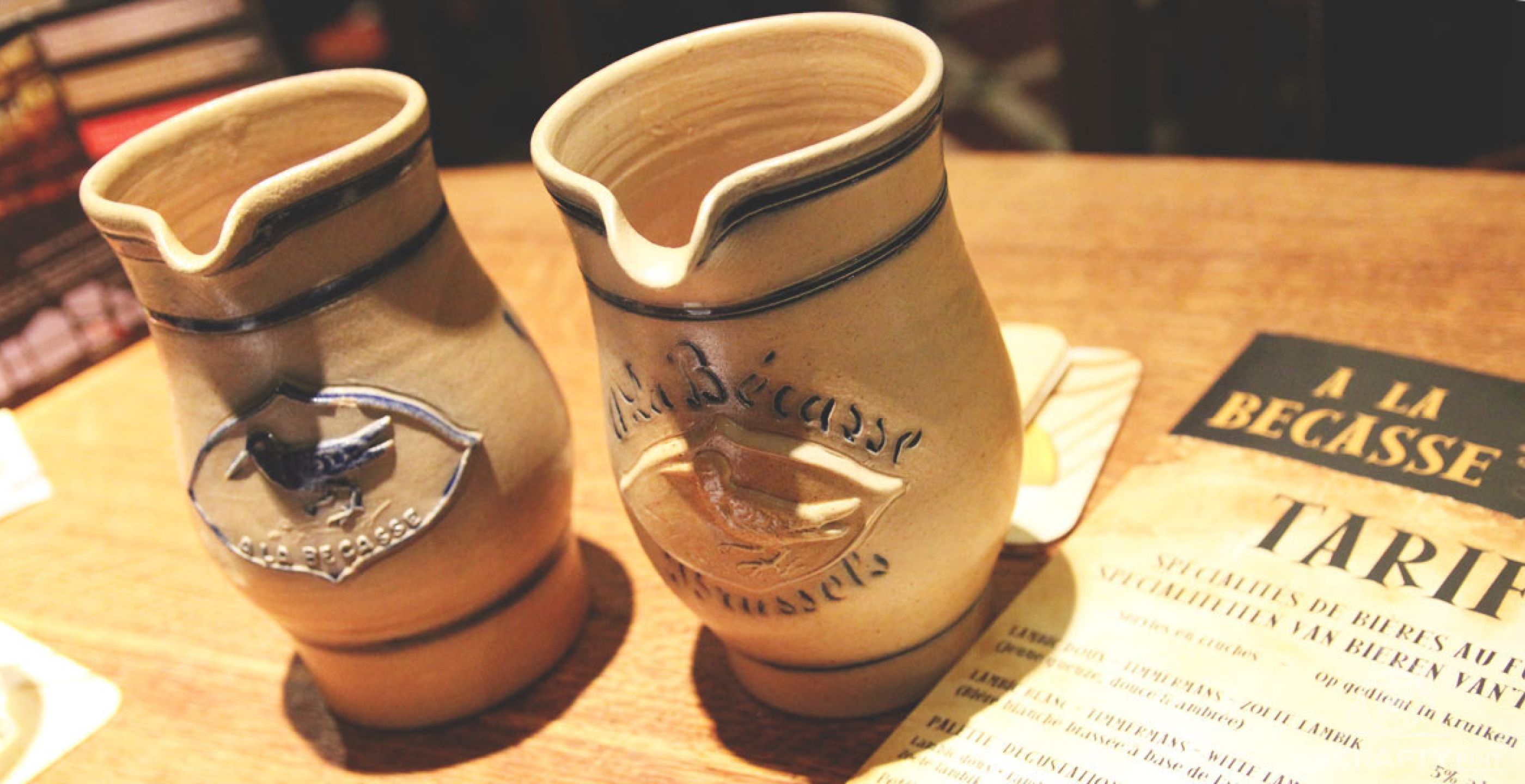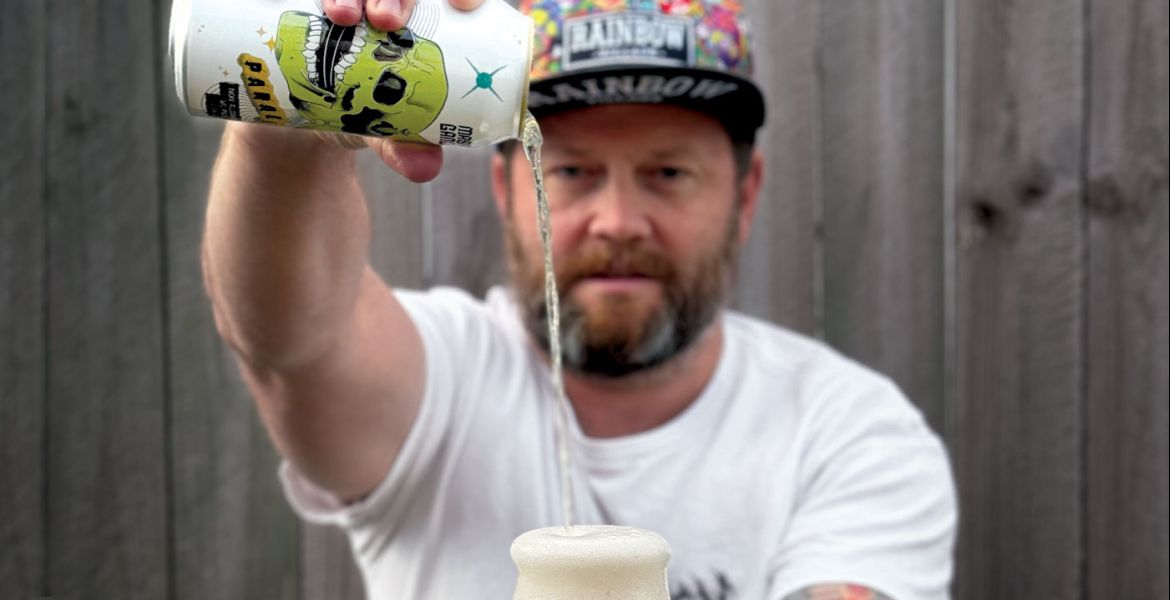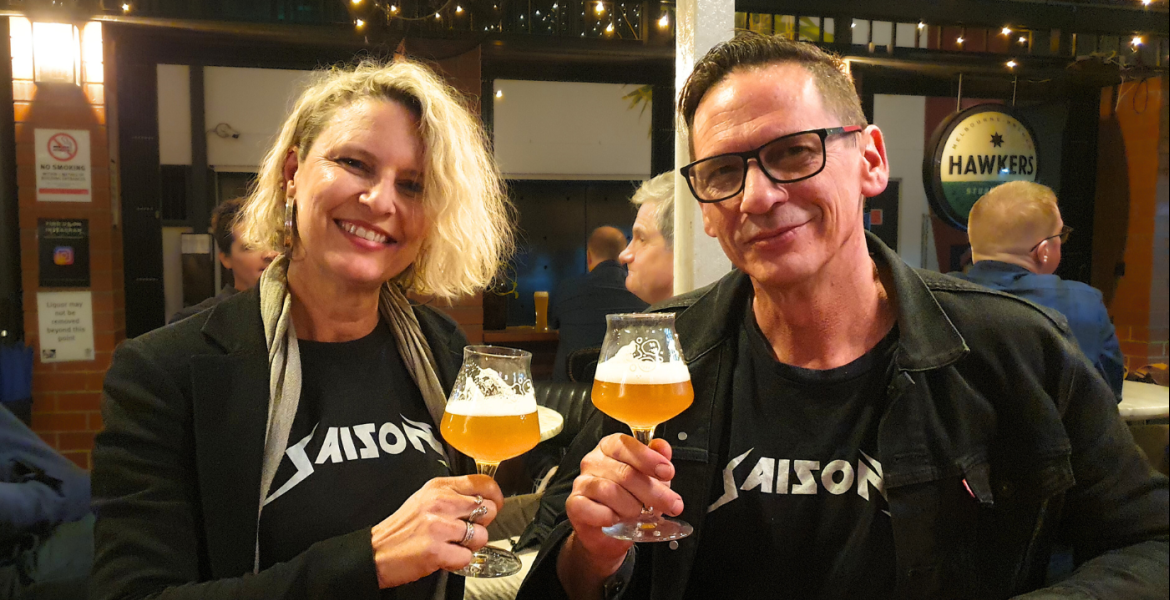As 2012 drew to a close, I predicted – on this site and in James Halliday's Wine Companion Magazine – that we'd see a big increase in the number of sour beers available in Australia in 2013. It didn't really happen.
Sure, a few more arrived but not the tidal wave I'd expected. Even in 2014, it was more damp squib than rise of the funky – to the point I started to doubt the era of sour power was on its way at all.
Five years on and it's safe to say the era of sour, wild and funky beers has arrived in Australia and won't be going anywhere in a hurry. This weekend (provided you're reading this article before August 24, 2019) even sees Melbourne play host to a major festival dedicated to such things. Sure, there have been tap takeovers and other events focused solely on all things sour, wild and mixed fermentation before, but nothing on the scale of Blobfish.
Eighteen brewing companies from across Australia, New Zealand and the US will gather at Melbourne's Meat Market to showcase the funkier beers from their lineups; in some cases, they have nothing else in their lineups. It's the brainchild of the team at Hop Nation in Footscray, who'll be represented by their Site Fermentation Project spin-off, and feels like another milestone on the road for these forms of beer production.
Such beers are slowly creeping into the mainstream too. Fruited Berliner Weisse and gose style beers are pretty much de rigeur for any self-respecting beer bar or crafty pub, especially in the warmer months, while barrel-aged and blended sour or wild ales are making inroads with wine drinkers and sommeliers in a way that pretty much every other beer style has failed to achieve over the past decade.
Yet, at a time when many drinkers now know what a hop is – or at least what they do to beer, understanding of this broad, often experimental and adventurous part of the brewing industry remains, for the most part, minimal among the vast majority of drinkers. Indeed, you may witness people in the know experiencing palpitations when they hear talk of sour beers as a homogenous whole. It's akin to treating, say, curry as one thing rather than a ridiculously diverse arena.
So, ahead of Blobfish, we thought we'd fire questions at some of those showcasing their wares – questions designed to offer a gentle introduction and insight into this glorious world, a world where acid of one form or another is typically to the fore, where bugs brewers traditionally feared with a passion are often key players, and where beers whose qualities might include aromas reminiscent of barnyards and aged cheese can be quite wonderful.
But, before we get to the personal experiences and thoughts of Hop Nation, Sailors Grave, Beerfarm and Garage Project, an attempt to summarise the key types of beers you'll find within the world of wild, sour and funky beers...
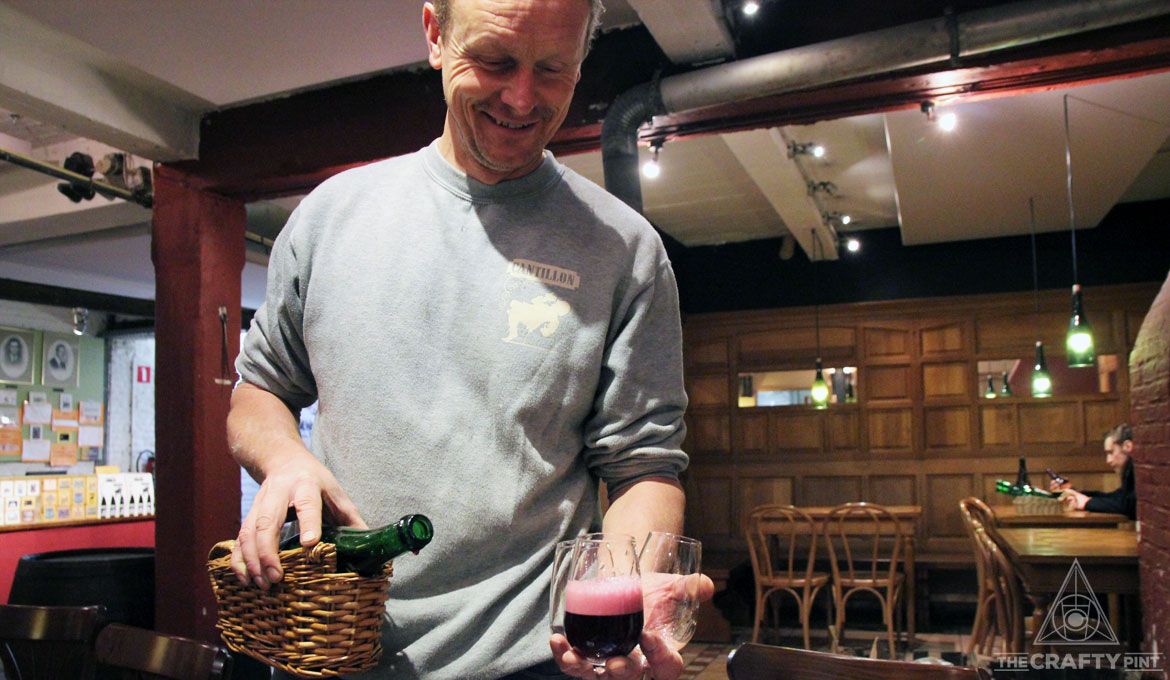
Lambic / Gueuze
Mention the word "sour" in the context of beer to someone and chances are they're most likely to think of the lambic beers produced in parts of Belgium, most famously by Cantillon (pictured above). Hot boiling wort is pumped into a koelschip – a shallow, broad, open vessel – and left to cool overnight, at which point the liquid is inoculated by microorganisms in the air, before being transferred to oak barrels or foeders (large oak vessels) to ferment over a period of months or years.
Unlike "normal" beers that will be fermented with a sterile Saccharomyces strain of yeast and kept fastidiously bug-free, here you'll likely find all manner of Saccharomyces, Brettanomyces, pediococcus and lactobacillus – and whatever else has been picked up from the local microclimate.
"Straight" lambic beers are uncarbonated, while blends of old and young lambics re-fermented in the bottle are called gueuze and are typically highly carbonated. The addition of various fruits to such beers is commonplace; those featuring cherries are called Kriek, those with raspberries Framboise – but other fruits are used too.
While such beers can be confronting upon first encountering them, they also deliver some of the most complex and rewarding beer experiences, with the best examples serving up all manner of flavours and aromas from the fruity to the funky, the sour to the refreshingly acidic, finishing dry and with fascinating textures too.
A growing number of brewers are creating such beers here in Australia, installing their own version of a koelschip, or using other open vessels, in their breweries and often tagging their beers Australian wild ales or similar.

Flanders Red / Oud Bruin
Staying in Belgium (which isn't a bad idea if you're into such beers) and you have two beer styles that share much in common yet possess key differences too. Starting with the Flanders Red – given it's better known here, predominantly down to the prevalence of Rodenbach in Australia – and here are beers that can be among the most rewarding and deeply complex you'll come across – beers with much in common with some red wines, in fact.
Taking Rodenbach – the exemplar of the style – mixed fermentation is again the name of the game, albeit with yeast and bacteria initially added by the brewers rather than introduced spontaneously. The key part of the process, however, is the ageing that takes place over 18 months to three years in more than 200 towering oak foeders, before old beer – when deemed ready – is blended with young beer to create the finished product, with different ratios of blend used for different beers in the brewery's range.
The resultant beers typically display dark and red fruit characters, some malt sweetness, bracing acidity of both the lactic and vinegar like acetic varieties, and very dry finishes. You can find versions with fruits added too; if you were to ask me to pick the best beer I've encountered in the world – a fruitless task in itself – I'd struggle to go past Rodenbach's Caractère Rouge, a version of their beer macerated on fresh cherries, raspberries and cranberries for six months.
Oud Bruin, or old brown, beers also feature mixed fermentation, are aged for extended periods and are based upon rich, sweeter malt bills. Here, instead of spending time in oak, however, the beer sits inside stainless steel, with the finished beers typically maltier and less acidic than Flanders Reds and with fruit characters more in raisin and fig than berry territory.

Sours Of German Origin
While the above beers take time, patience and often a great deal of skill at the blending stage to create – and can be a more challenging prospect for newcomers to this part of the beer world – most of those you'll encounter across Australia today can be traced back to styles with origins in Germany. For the most part, if you pick up a beer tagged "fruit sour", "tropical sour" or similar, the tracing back will take you to either Berliner Weisse or gose.
Both beers took their name from their place of origin – the former Berlin, the latter Goslar near Leipzig – while both typically feature a mix of pilsner and wheat malts and are soured with lactobacillus. This last part is key and can happen in various ways, which we won't go into here, but the idea is that combining lactobacillus with more traditional top-fermenting yeasts gives the beer acidic, "sour" qualities that can make for a tart and refreshing experience. With gose (which we wrote more about here), salt and coriander are also used within the brewing process.
The beers are usually low in alcohol content – either side of 4 percent ABV is a pretty good guide – and these days they are commonly used as a base from which brewers launch. This might see them adding fruit, spices or other adjuncts, sometimes to the point where the drinking experience is more about the adjuncts than the underlying beer.
They offer brewers a far quicker turnaround than the styles above and, due to their light, refreshing nature and lower ABV are becoming popular warm weather refreshers and mid-strength alternatives.
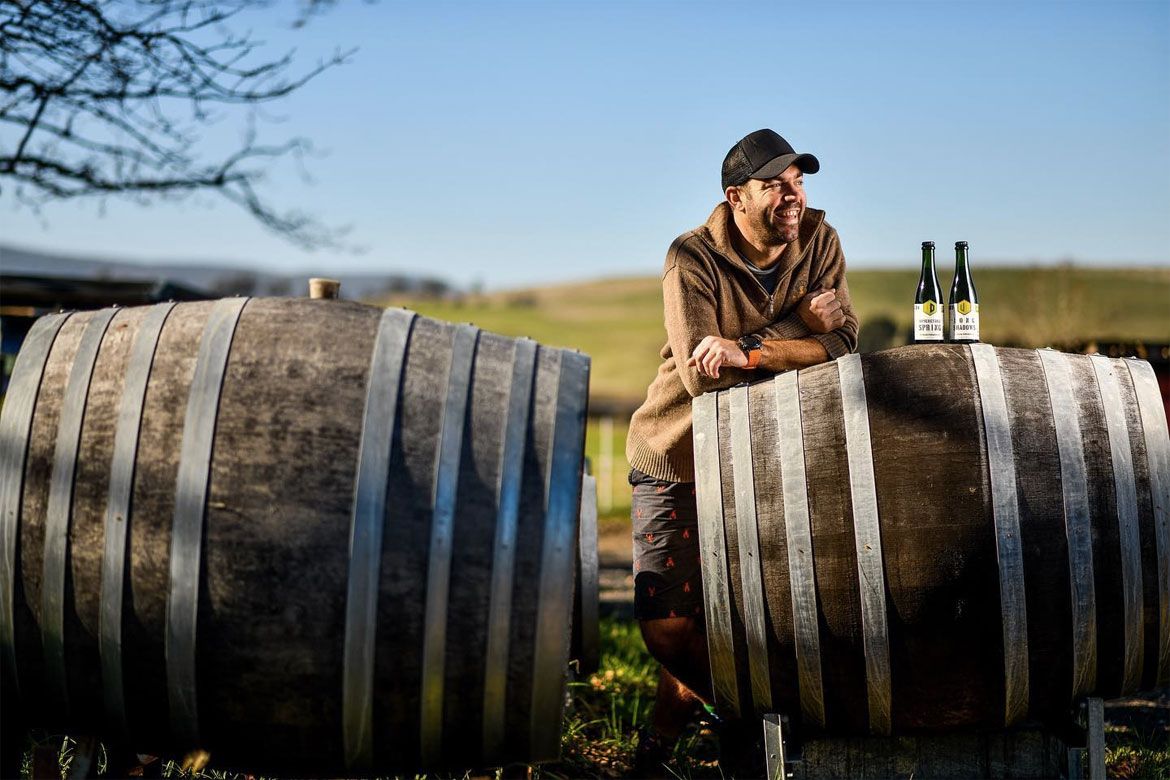
Everything Else
As with pretty much any beer style in the contemporary beer world, brewers are playing around in every way imaginable. You'll find kettle soured NEIPAs, beer-wine hybrids that share common ground with more traditional sour beer styles, imperial Berliner Weisse and much more besides.
Australian brewers are creating unique house cultures featuring native yeasts or whatever they've captured from the air of their farm of around their brewery. And there are other less common historical sour beer styles that occasionally rear their heads too, such as the smoky Lichtenhainer.
What's more, it's very much the wild frontier of contemporary brewing. While we are still learning more about the ways in which different ingredients can interact at different times in the brewing process, the unknowns and experimentation in the world of spontaneous fermentation, ageing and blending are arguably the most fascinating niche within beer today.
But enough from us, what do the people living it day in, day out have to say?
The Brewers
Ahead of Blobfish, we approached people at four of the breweries in attendance to find out more about their experiences of sour, wild and funky beers – and just what it is they love about them. They are:
- Duncan Gibson – co-founder of Hop Nation, the Footscray brewery behind Blobfish and the Site Fermentation Project series of beers and wines.
- Gab and Chris Moore – the couple behind Sailors Grave, the East Gippsland brewery arguably best known for their gentle sours featuring all manner of farmed and foraged ingredients.
- Josh Thomas – head brewer at Beerfarm, the Margaret River brewery whose Shirazzaweiss has become a cult hero in WA.
- Jos Ruffell and Pete Gillespie – co-founders of Garage Project, the pioneering and endlessly innovative Wellington brewery that has a dedicated Wild Workshop.
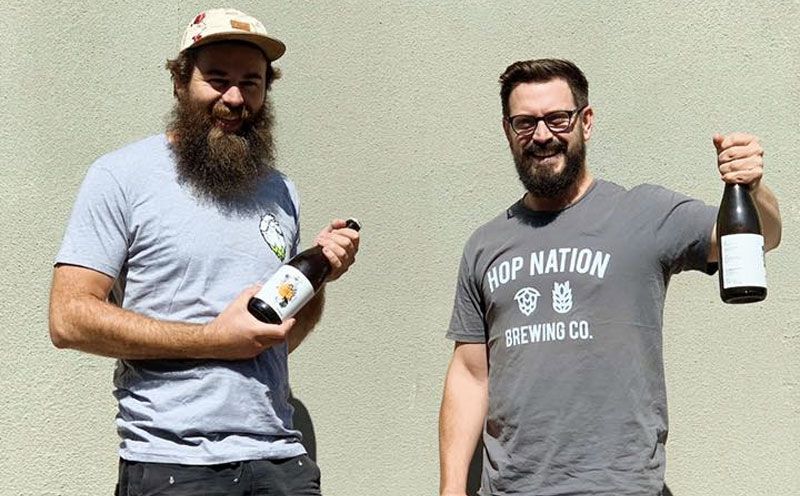
What was the first sour beer you tried? What was your reaction?
Duncan Gibson: I was 19-years-old at a Belgian Beer Café in Auckland and I tried a cherry sour. I’d never had anything like it, but after trying I was like: "Fuck, this is delicious."
Chris Moore: Allagash Interlude… changed everything for us. Purchased from a Whole Foods and consumed while camping in our RV in another brewery's carpark in Georgia. It's hard to evaluate after such a long time but from memory it was subtly tart and funky with layers of fruit and a delicious dryness. This was before we opened our brewery and it changed the trajectory of who we wanted to be!
Gab Moore: Like Chris, I remember it well, it was the same beer – it blew my mind. Also on the same trip, I had Anderson Valley The Kimmie, The Yink and The Holy Gose.
Josh Thomas: Young Henrys Golden Sour – it was a beer that was a good result from unfortunate events due to the boiler breaking down halfway through a brew. The brewers at the time made lemonade out of lemons, producing a very clean Berliner Weisse. To be honest, I had no real palate for sours, nor did I have any idea how to make them - my initial reaction was probably what most people do: squinted eyes, squished up face and an almighty puckering mouth. Can't say I was overly keen, but after that first shock on the palate, you become a bit more accustomed to that higher level of acidity. Fruit in sours eventually was the thing that grabbed me the most.
Jos Ruffell: I have vivid memories of finding myself in a Cantillon tasting - talk about jumping in at the deep end. The beers were unlike anything I had tried before, but it was brilliant. The tasting was really well run and talked through their process, what to look for and really set me up for a curiosity to explore the style further.
What's the appeal of the wider sour / wild / funky beer world for you?
DG: Coming from a winemaking background, there are definite parallels – use of barrels, spontaneous fermentation, use of microbes. It feels more artistic than traditional brewing, which is more tied to following a recipe.
CM: Whatever the degree of complexity, these are beers which open the palate and go really well with food. On the more complex end of the spectrum there is just so much to discover - both in the making and the drinking.
GM: Being challenged and surprised.
JT: A lot has to do with the challenge; it's such a complex process regardless of which strategy you use – it's always good testing yourself. In the beginning, it was a lot about making a clean Berliner Weisse, then transitioning to balancing with fruit. I guess for me now the appeal and biggest challenge is the wilder and barrel-aged sour beers – that takes some serious time, patience and, of course, beer!
JR: I think the appeal is celebrating traditional, rustic brewing styles, and then also looking at ways we can take the tradition forward with new ideas around, say, wild flower spontaneous ferments, or developing mixed cultures of yeast indigenous to your country and what that terroir is like.
They are also beers that can be transformative in experience when paired well with food, and remind me of the slow food movement. It's nice working with styles that take months, and years to fully develop.

Did you ever envisage it taking off like it has? And how far do you think it might grow?
DG: If America is anything to go by, it was always going to happen. But, even though kettle sours have become a big thing here, the volume of mixed fermentation beers being sold is relatively very small. I think it will definitely keep growing.
CM: Yes - we always felt it was going to play a big role in Australia. People like their worlds to grow and these styles grow people's experience of beer dramatically.
GM: I knew it would, but not at the speed it has. I think it will fill out a bit more in the next few years when all those barrel programs that breweries have going on in the background start to come together.
JT: When we first started to drink sour beers and produce them we did have a little hunch it could take off; however, the main focal point for us at the time was just to make sure we were creating a balanced sour beer that we and others could enjoy drinking. I can't say I expected to be the beast it is today but I'm definitely glad it is!
JR: It's remarkable to see the development and spread of the style, from what was once almost extinct in Belgium to where we are now. It still feels very early, though, with a lot of exciting areas to explore yet, and many drinkers to educate and interest in the styles.
Are you a kettle sour or "cuddle sour" person? And why?
NB: Cuddle sour is a term I was introduced to by Richard Watkins of BentSpoke, who was making blended sours a decade ago at the Wig & Pen, to describe those beers – like gueuze and Flanders Reds – that take time and a lot of love to produce.
DG: Definitely cuddle sour, because the depth and complexity of the beers is so much better.
CM: We love them all and there is a time and a place for everything.
GM: Kettle for a session, cuddle to linger.
JT: I'm a fan of any sour providing it's got some balance, fruit and, in some cases, a bit of complexity. Cuddle sours are on another level, with time, patience and some seriously developed palates required – nevermind the knowledge and experience you need. This is something we are only just starting to understand and without the temperature control and space in the facility it's not a niche we can explore heavily just yet, but it's something we are spending time on for the future.
JR: They both have a place for us. It's great being able to put out beers in a lower pH spectrum that are relatively clean, and can be a great platform for flavours and adjuncts, and that we can release to a wider audience as an introduction to the style. The more involved approaches are certainly where the mystery, romance and art are, with the options around barrels, foudres, stainless, cultures, and blending somewhat endless.

What are the greatest challenges in creating a good sour beer?
DG: It’s a huge uptake in time and team resource, and in Australia at the moment there’s not a huge information resource either. That was part of the reasoning behind Blobfish – so all us brewers doing these beers could get together and share knowledge.
CM: The challenge is always in making something delicious and balanced … and trusting your palate. Beer that tastes amazing one day can taste terrible another time – all depending on mood and context. As much as you try to standardise sensory evaluation, things just taste different at different times!
GM: I think the challenge for both is drinkability, but for a cuddle you're more willing to give it the time and reverence it deserves. You're also more willing to be taken to places you didn’t expect.
JT: For us, it's probably consistency and balance as the obvious ones. Sour beers come across quite dry and thin so a bit of fruit helps balance that out and also applies another level of flavour to explore. When we started producing these beers we were very raw in our knowledge of it all but, over the sour journey, we have done nothing but improve the process.
When making a Berliner Weisse you are putting your yeast in a less comfortable environment than they would normally enjoy: lower pH, adding fruit, lactic acid, higher amounts of proteins – to name a few – means we need to be more selective about the yeast we use and also ensure it's looked after as well as we can. Measuring Titratable acidity is also a test we do throughout the process, to ensure we are able to control the amount of lactic acid production during the sour mashing period – we are still perfecting this and probably won't stop.
JR: Balance, nerves of steel to give something a chance and patiently wait?
Pete Gillespie: I agree with Jos – having the nerve to wait. We’ve had barrels that have been on the cusp of dumping, which have gone on to become some of the best sour beer we’ve produced. However, we’ve also had beers that we’ve left too long and they’ve gone past their best. It really is all about timing.
At the other end of the spectrum in the fast and furious world of kettle sours, it’s all about having healthy bacteria, which can sour quickly. Just like yeast a happy ferment gives the best beer.
They can be great homes for adjuncts and unusual ingredients: which do you think work well and are there any that should be avoided?
DG: The options are endless! We’re exploring with lots of different fruit, and we’ve had some interesting results with native Australian botanicals.
CM: Fruit and botanicals – and lactose in kettle sours – are our favourites. But, hey, we are up for anything really ... as long as it is balanced!
GM: I like to think anything from the cruciferous area of adjuncts should be avoided … but I have a love of kimchi that knows no bounds and Sharon [Flynn] and I from The Fermentary have been talking, so I won’t rule it out.
JT: I think the obvious answer here is fruit, but not just any fruit – I think you need fruit with quite a prominent character and a good amount of body/sugars. We like adding the fruit into the fermenter for secondary fermentation, after pasteurising the fruit first, as it seems to hold up the integrity of the fruit flavour better than boiling it with the wort.
This can be quite the opposite with things like herbs and spices, where we'd add these in the last ten minutes of the boil to extract the optimum level of flavour – the challenge here is not overpowering [the beer] and also making sure it doesn't get lost in fermentation. In terms of which ones to avoid, well, I'm too open to any idea and trying to make it work so probably not the best person to answer that, although I can say if there is anything to avoid it's using adjuncts that will inevitably cause a giant mess at multiple stages through the process. But I don't think I've learned that yet!
PG: We’ve had great fun with all sorts of fruits, flowers, teas, herbs and even coffee. I think I’m yet to find something that really doesn’t work, although you need to be cautious with particularly sour fruit – their powers combined can create a ferocious brew. A Sea Buckthorn experiment we once tried may have permanently removed the enamel from my teeth.
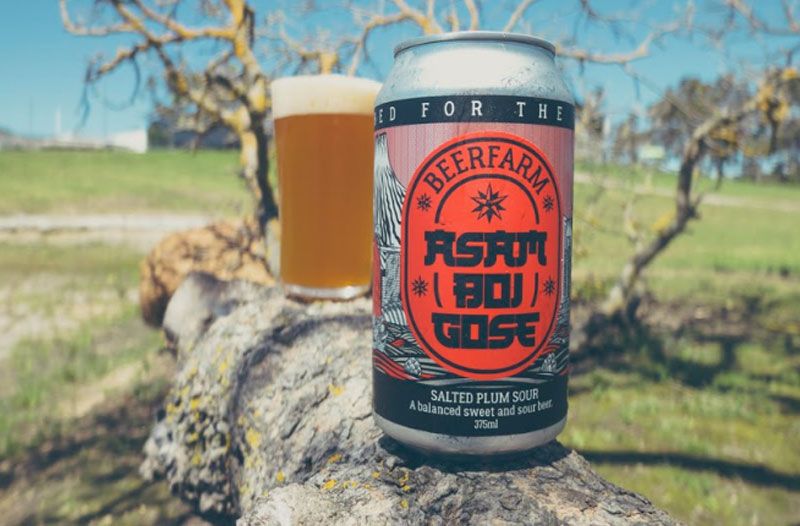
What's the best local example you've tasted?
DG: There are so many great local ones I couldn’t call one the best. Recently, though, I’ve really enjoyed Wildflower’s Thomazzo. Dope.
CM: Have to say Wildflower - especially fruited ones.
GM: For me it’s most things from Two Metre Tall; and Wildflower’s The International is still sitting at the front of my mind.
JT: To go back to a beer that really came out well before sour beers were hitting the Aussie market was Watermelon Warhead by Feral. Although it may not get the hype today as it did in the past, for me this was a classic example of fruit and sour balance to give you something you could drink all day in the summer.
PG: Among the other Kiwi breweries, Craftwork routinely produce excellent sour and funky beers. From our own Wild Workshop, I’m particularly excited for the release of our one-year-old coolship spontaneous blend later this year. Adjunct sours – I’m really enjoying our Weird Flex with cucumber, celery and grapefruit and looking forward to releasing our Rule of Three, a bourbon barrel-aged cherry sour spiked with coffee.
What's the best you've brewed? And the biggest disaster you've had along the way?
DG: Lapin 2018 was certainly up there. We used 250kgs of fresh Lapin cherries aged on our foedre blonde. No disasters too big, but there’s always the odd barrel here and there that doesn’t make the cut.
CM: There are a lot of work in progress beers that I am reserving judgement on but I am really excited by the middle ground – beers brewed relatively quickly – six to 12 weeks – that are bright and clean but with enough complexity to keep things interesting. My favourite so far is our beer brewed on 100 percent sake lees and finished on Persimmon … a very subtle beer really, but I love the layers of umami, fruit and tartness.
As far as disasters – we have a few barrels of one-year-old spontaneous ferments that are smelling pretty revolting right now – right there in the deep vomit spectrum. The funny thing is they taste pretty good. Only thing we can do is give more time and see where they go I guess!
GM: Our Summer Farmhouse beer from two years ago – we ran out at the brewery and had to buy it from our local supermarket – and Crystal Healing, our collaboration with Stomping Ground and Renee from Little Latin Lucy. It always surprises me when I crack a can. I put so much into that beer, growing 400 kilos of crystal apple cucumbers – it took a lot of nurturing.
JT: For me, personally, it was the Strawberry Sour. From concept to delivery it hit all the marks and strawberries aren't the easiest to brew with. The beer's total volume was made up of one-fifth strawberries, which in turn gave us almost a smoothie-like sour beer. The initiative to save fruit that would have otherwise been thrown out in the needle-in-a-strawberry-stack saga would be one of the more satisfying ones too.
Disaster, well we always try and make the best of any bad situation here at Beerfarm so nothing absolutely devastating has happened. Early on, when we started producing Berliner Weisse, we had one batch Miles and I wasn't overly sure about in the fermenter. When faced with issues like this it does cross your mind for a minute to not continue with it and chuck it away. We couldn't do that – no, nup, never – and although chucking it into barrels was an option, we happened to be in the time of year for Margaret River vintage. When a local winemaker offered up 100kg of Shiraz grapes we said: "Yes, please!" This beer is now made intentionally every year and is a beer I'm very fond of and love.
PG: Possibly one and the same: a spontaneous brew we did using the yeast and bacteria from a freshly harvested hop bine to inoculate the wort. It developed a strange minestrone soup aroma and consensus on my brew team was we should dump it. I finally gave in but said we needed to keep at least one barrel. It turned out to be one of the best beers we’ve ever produced at Marion Street – something I’ve never let the team forget.
If you're reading this in time and are keen to learn – and taste – more, there's still tickets left for Blobfish – head here to grab yours.
Photo at the top taken at À la Bécasse, an old tavern in Brussels where you can still enjoy lambic served in stone jugs.
Also, thanks to Luke Robertson of Ale of a Time for proofing my attempt to condense an entire universe into a few paragraphs above!




